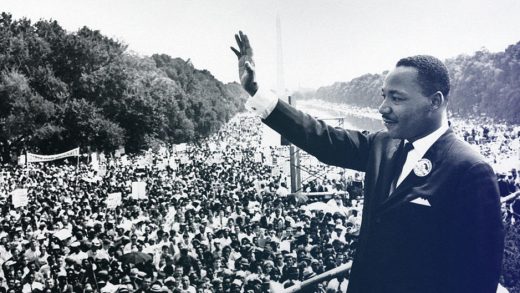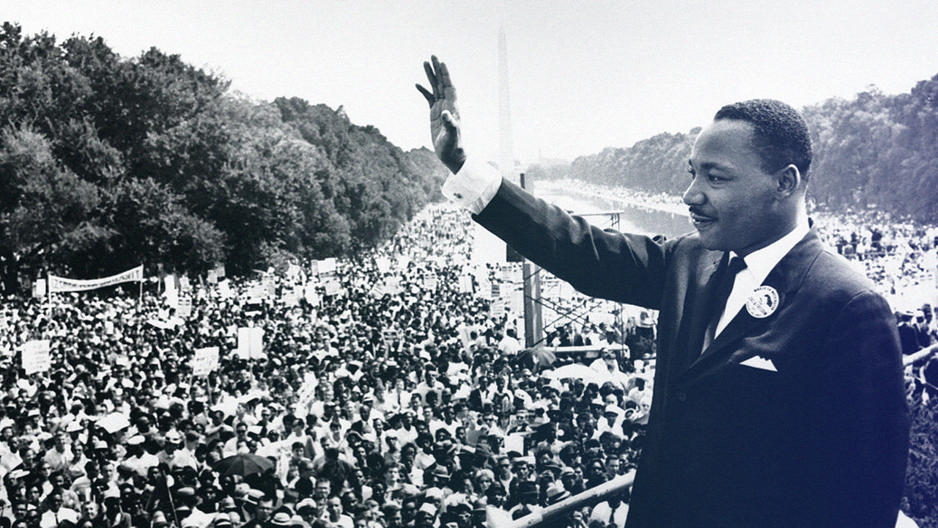Why Imagery And Metaphor Are Essential For Business Communications
Shakespeare didn’t suggest that a person by any other name would be just as likeable, Dr. Martin Luther King Jr. didn’t just have a vision, and Muhammad Ali didn’t just throw punches. Instead, they and other historic figures became masters of creating vivid imagery through metaphors.
While speakers and writers can only appeal to one of the five senses, research has proven that their ability to engage more of the senses through their language significantly strengthens the impact of their words.
Take this passage from Dr. King’s I have a Dream speech, which is widely considered one of the most powerful public addresses ever made, as an example.
“In a sense we’ve come to our nation’s capital to cash a check. When the architects of our republic wrote the magnificent words of the Constitution and the Declaration of Independence, they were signing a promissory note to which every American was to fall heir. Instead of honoring this sacred obligation, America has given the Negro people a bad check, a check which has come back marked “insufficient funds.” But we refuse to believe that the bank of justice is bankrupt. We refuse to believe that there are insufficient funds in the great vaults of opportunity of this nation. And so, we’ve come to cash this check, a check that will give us upon demand the riches of freedom and the security of justice.”
By using such vivid imagery, Dr. King causes the listener to imagine an actual check, an actual bank, the actual “riches of freedom,” and these associations have been proven to create longer-lasting memories.
“Associations are powerful memory hooks,” wrote Shiv Gaglani for Fast Company in 2013. Before cofounding his medical education technology company, Osmosis, Gaglani says that he was inspired by an experiment called the Baker-baker paradox.
In the experiment researchers randomized volunteers into two groups and showed both groups the same picture of the same man. One group was told the man’s last name was “Baker,” while the other group was told the man was a baker by trade. Later, when asked to recall the word, those in the group that were told the man was a baker by profession were significantly more likely to respond with the correct answer than those in the group that were told his last name was Baker.
“When you are told someone is a baker, you may begin thinking about the bakery nearby and your favorite baked goods, which then provides more mental links back to the original image-word memory,” explained Gaglani. “It’s like trying to catch a whale (I’m told): The bigger the schema of associations, the bigger the net.”
There are a variety of similar brain quirks that can be harnessed by speakers, leaders, and managers to ensure their words are absorbed. For example, a 2008 study by Yale researchers found that study participants were more likely to perceive someone as having a “warmer” personality if they were holding a warm beverage. A similar study in 2009 found that participants perceived a book to be heavier when they were told it contained more important information.
Whether leading a team, making a presentation, or simply chatting it up with a coworker, metaphors play an important role in the workplace.
“Metaphors are valuable tools in business, particularly when people need to communicate complex, dry ideas,” says Esi Dawson, a manager of science of experimental engagement for Deloitte’s Greenhouse Experience team. “By associating an unfamiliar idea with one that is commonplace, you can spark better understanding of complex ideas.”
Hunter Thurman, a storytelling coach to Fortune 500 companies, pointed out, “Neuroscientists know there’s a connection between emotions and decision-making,” in a post for Fast Company. “If you can’t offer your audience an emotional reaction, chances are they won’t feel spurred on to action—encouraged to make any real decisions,” he wrote. A story rich with metaphor could be the antidote.
We know that Muhammed Ali didn’t actually float like a butterfly, but metaphors, like stories, should stretch the truth a bit, according to Pakistani writer Mohsin Hamid. “If you find that the story that you want to tell isn’t true right now, that gives you a strategy,” he told Fast Company in a previous interview. “Use the truth as your touchstone,” he explained, as “any gap between the desired story and the truth is a way of picking out what you need to do in the future.”
Dawson, however, warns against mixing metaphors, using too many, or using ones that are overly complex, which could cause the message to get lost in translation. Instead, she recommends carefully considering your audience to determine what metaphors will have the greatest resonance.
Fast Company , Read Full Story
(29)









